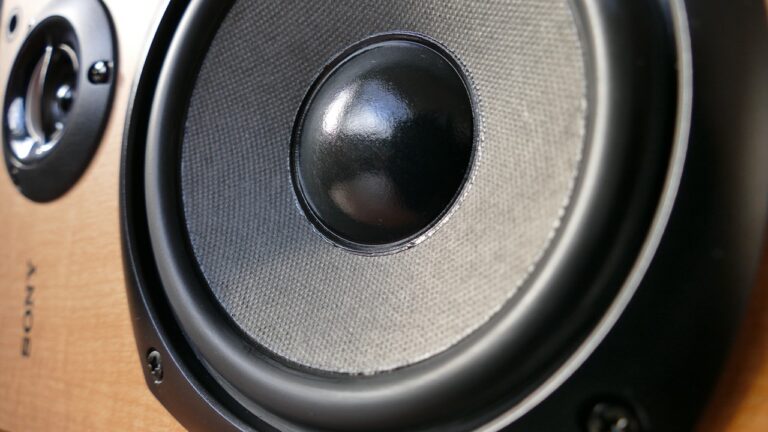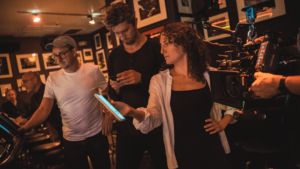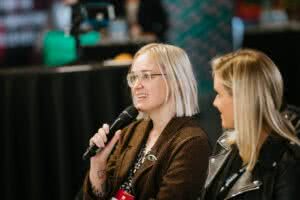If you’re hosting a big live music event such as a festival or concert you’ll have to first apply to the council for a licence – and this licence will have strict limits about noise.
Breach these limits and you jeopardise the future of your event, but how can you keep the local authority happy while still ensuring your performances sound great? We asked Roly Oliver, Head of Live Events at leading sound and acoustic consultancy Vanguardia.
Oliver is an industry-acclaimed sound engineer, having worked with top artists including Manic Street Preachers, Daft Punk, Foo Fighters, Pet Shop Boys, Red Hot Chili Peppers and Snow Patrol.
Related: A simple guide to premises licence rules for events
How to create a noise management plan?
“We first ask the event organiser to tell us when the event is, the nature of the music and the hours of the event. We ask them to send us what they’ve been given from the council, which is quite often a generic document. Our job is to help interpret the licence in relation to their event, look at adding more specific terms and find an agreement that is actually workable.”
What do licence agreements mean for your event?
Yes. The licence will dictate the decibel limit at the nearest property, so you have to acknowledge when a venue has residential buildings too close by. We can guide the client about whether events are actually possible in the first place so they’re not wasting their money going all the way down the line and then finding they’re not actually workable.”
How can you assess the suitability of a site?
“We can do IMMI modeling, which uses noise prediction and mapping software. It takes the predictions from the sound system and combines it with the topography of the site. It looks at all the different stages and can show you how the contours of the sound spread out, not just in the near field, but also in the far field, up to two kilometers away.
“You can use that to work out the best positioning and orientation of the stages. At Reading Festival we did a model where we looked at rotating the main stage through 90 degrees. By doing that we could see we got beneficial results in one area but actually it made it worse in an area that was already quite tricky. Consequently, we put it back. The modelling means the event doesn’t have to experience a year where it tries something and it doesn’t work.”
Related: How to work with artists to promote your live music event
Can you use modeling to help negotiate licence terms with the council?
“You can give an example of how you think the sound is going to be spread across. What tends to happen is people base their numbers on the Pop Code (Code of Practice on Environmental Noise Control at Concerts), which was written quite a long time ago. That recommends a limit of about 65 DB at the nearest property.
“Now, most of the time for events on under four times a year, you get up to 75 DB. If we feel we could hit 75, we’ll then go into negotiations about how we can use examples where it’s been successful.”
What are the decibel limits based on?
“It’s based on human behaviour – it’s literally down to how people react. It’s not based on some arbitrary number; it’s been found in studies that frequencies affect people differently, meaning some people will be affected while others simply won’t notice.
“But what we can do is show examples where we’ve had events where there’s been 75 DB at the nearest property and it hasn’t caused an increase in complaints, so, therefore, it is workable. If you said, ‘we want 80 DB at the nearest property’, you would get hundreds of complaints and the event would be difficult to put on the next year.”
How can you maximise your sound without increasing complaints?
“By looking at the low-end frequencies; 63 hertz is the frequency we’ll centre it around and look at the level of that entire octave. If it hits 90 db people don’t complain but when you start going above, that is when you start triggering complaints.
Related: How music fans are selecting their summer festival lineup
You joined Vanguardia to oversee the company’s distribution of pioneering sound management tool MeTrao. Tell us more about this.
“MeTrao offers a new way of measuring sound and vibration – the name actually comes from the Greek word for measurement. It can pinpoint which sound system, from a multi-stage event, is causing the dominant noise offsite so that potential breaches of regulations can be detected in advance and avoided.
“For example, if you’ve got five stages pumping away; dance on one stage, rock on another and folk on another, the sound engineer might say, ‘I can hear some low end and I think it’s the dance stage because I can hear a four-beat, so can you go to the dance stage and bring that down a little bit?’
“But if you’re doing a show where you’ve got five dance stages, it’s much more difficult. In the past, we’ve been at that point where we were literally trying to hum baselines over a crackling radio! What MeTrao does is it looks at patterns from all the different stages and corresponds them to offsite. You can work out how much level is coming from each individual stage. You can go down to individual frequencies, the actual third octave, so it gives you a lot more control.”
I’ve read that the tool helps organisers meet both regulations and maximise sound quality?
“Yes, it permits the maximum level to be achieved. When we first tried it at Reading, we had Metallica against the dance stage and we were just at the point where we were getting quite close to the offsite limit. Metallica wanted some more level but we could see the frequency was around 250 hertz.
“We were able to ask them to take a little bit of that frequency out, which allowed them to bring their whole level up. They were able to deliver the whole Metallica show without compromising it. When you’re doing a festival, the difference between a good show and a great show can just be two or three DB and this gets you that little bit of extra level.
“Another benefit of MeTrao is that it can also tell you the local environmental noise. In the context of the Wireless Festival, our main monitoring position is next to the train line where there are trains going past every minute. This tells us the actual level coming from the site and we can separate it off from other noises. This is important because the licence is based on music noise levels, not overall noise. It’s turned it into much more of a precise science.”
How do local authorities monitor events?
“The local authority will have their own officers taking readings and usually will be led by complaints. We’ll be doing continuous monitoring at the stages and agreed offsite locations but the council will be looking for where there might be incidences of problems. If a complaint occurs, we’ll usually go there with the council officers. We try to work as part of a team with them.
“We provide our report to the council and give an analysis of what all the data means. The report may be used to present to the SAG (Safety Advisory Group) meeting when they come to do the event again so you have to make sure that the information there is very understandable.
“The report also means I can look at an event from three years ago and know what happened at that event and what the incidences were, so when we’re going back to it we know what we have to look out for.”
Related: How to make sure your music festival turns a profit
What happens if a breach is found to have taken place?
“There are some incidences where you have to argue the point if you’ve got an event that delivers value to the community overall that has to be taken into consideration. There are times you might have breached a limit but your job as the noise management team is to help people understand why it happened and that it wasn’t just a blatant flouting of the regulations.
“You might, for example, have a situation where there’s a really strong wind that can increase the level by 5 or 10 DB at an offsite location but if you reduce the level onsite, where you’ve got 40,000 people, you can end up with them crushing towards the stage. You will then have a meeting with the council officers and say you feel it would be dangerous so you can’t complete the containment within the licence limit. If you’ve breached it and you haven’t got a good relationship with the council then you won’t get a licence again, so you do want to avoid that.”
Are there any other situations outside of your control that can result in a licence breach?
“Cloud cover can cause all sorts of random things. I had a situation with a Foo Fighters show in Edinburgh where we had complaints from five miles away because the sound was going up and bouncing back down again. However, if you are within the licence limit onsite, it doesn’t matter that people can hear it elsewhere.
“Having said that, your job is to help mitigate the circumstances; you don’t just ignore it. You go along and help calm the residents down. When the event comes around again you want to make sure you have the local authority are onboard.”
At what size does an event require a full noise management team?
“It’s down to the council; they will take a view on it. They might require you to have a noise management team as part of the licence or they might just require you to take a sensible view on it.
“I met with a council last year that was trying to look at ways of helping promoters of smaller events, for example, if they’re under 5,000 people and they can’t afford a full team. However, as a promoter you should have one (a team) to protect yourself. In case anything comes up, you’ve got the evidence that you hired a team that is properly qualified to monitor the site.”
Download the Noise Complaint Checklist
Conclusion
Clever tweaks can maximise your event’s sound quality, while preventing you from breaching regulations, so make sure you bring the proper expertise onboard.





